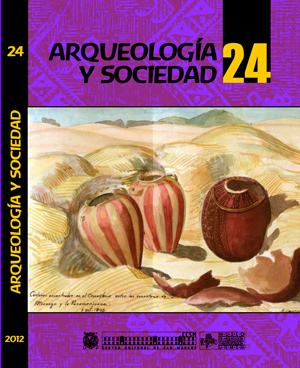THE INCA ADMINISTRATIVE CENTER OF TAMBO VIEJO
DOI:
https://doi.org/10.15381/arqueolsoc.2012n24.e12349Keywords:
Inca State, South Coast of Peru, Acari, Tambo Viejo, Architecture.Abstract
In this article we present the results of the archaeological studies carried out at the Inca administrative center of Tambo Viejo, the only facility of its character built by the Inca in the Acari Valley of the Peruvian south coast region. This study reveals, among others, the architectural complexity of the site and its enormous size. Likewise, this study demonstrates that Tambo Viejo has a long sequence of human occupation that began early in the Early Intermediate period and continued to colonial times. In this paper we evaluate the Inca ocupation of the site, taking into consideration the architecture. This analysis demonstrates that Tambo Viejo was established following an Inca plan; however, the architecture is local, suggesting that the builders of the site were from Acari. This observation allows us to argue that the Inca administration adapted to local construction patterns.Downloads
Published
Issue
Section
License
Copyright (c) 2012 Dorothy Menzel, Francis A. riddell, Lidio M. Valdez

This work is licensed under a Creative Commons Attribution-NonCommercial-ShareAlike 4.0 International License.
THE AUTHORS RETAIN THEIR RIGHTS:
a. The authors retain their trademark and patent rights, and also on any process or procedure described in the article.
b. The authors retain the right to share, copy, distribute, perform and publicly communicate the article published in the Arqueología y Sociedad (for example, place it in an institutional repository or publish it in a book), with an acknowledgment of its initial publication in the Arqueología y Sociedad.
c. The authors retain the right to make a subsequent publication of their work, to use the article or any part of it (for example: a compilation of their works, notes for conferences, thesis, or for a book), provided that they indicate the source. of publication (authors of the work, journal, volume, number and date).






